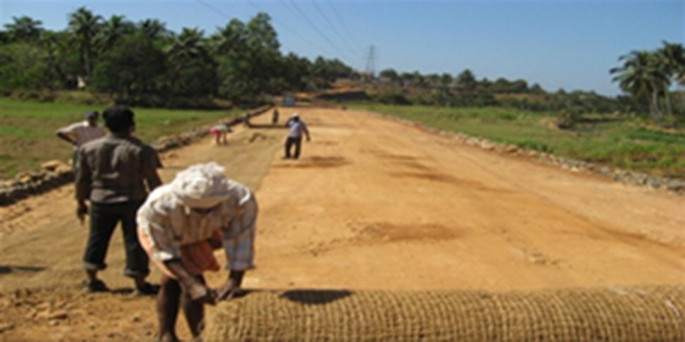Coir geotextiles in roads – Roads built on BC earth bases develop uneven pavement due to the loss of strength of the earth base due to softening during the rainy season. BC soils are very clayey and present a challenge to road engineers. As it dries, it shrinks and becomes so complicated that road stones can no longer easily break up clumps for processing in road construction. However, when wet in the rain, it swells, losing strength and causing severe problems with subsequent driving performance.
Clay’s road ruined all of these results on the road, so the road engineers decided not to build roads. There is no other choice in British Columbia soil, as black cotton soil is available in about a third of the state. It is often impossible to build a stable base layer on soft ground without losing expensive subgrade material penetrating the soft ground. Therefore, soil improvement techniques should be applied in development studies.
Coconut geotextiles constitute one of the largest groups of geosynthetic products. One of the most popular applications of geotextiles is the construction of sidewalks and embankments on soft soils. These are materials in the traditional sense, consisting mainly of synthetic fibers. However, products are not made from natural fibers.
Application of Coconut Coir Geotextiles in Roads Construction
Coconut geotextile is made by grinding coconut fiber with a grinder. The coconut fiber is twisted into a coconut rope which uses a spinning wheel machine. The diameter of the coconut rope can be changed as required. After the thread is formed, the coconut fiber rope is woven into a cobweb. The thickness of this grid can be adjusted as needed.
The material for making coconut geotextile is cheap and easy to find. In this method, coconut fiber geotextile is used as the top or inner layer of the road. It can cover water runoff and support barriers, filtration, and drainage.
Coconut geotextiles or coconut nets are distributed directly over the area as roads. First, the leveled ground, and then a coconut net is spread over it. Coconut fiber geotextile is an alternative to road paving as it is made from natural materials. The material is strong but can easily damage the ground. It is safe for the soil ecosystem compared to other materials such as cement, lime mixtures, etc.
Coconut coir geotextiles in roads are used to improve soil nutrients after decomposition. It becomes a nutrient and is helpful for plant growth. Coconut coir geotextiles in roads have been proven in areas both of high compressibility and sloping ground. It is also suitable for roadblocks and soils prone to abrasion and erosion.
Increase soil nutrition by using coconut fiber geotextiles on roads. It is also used for road embankments and soils prone to abrasion and erosion.
Maybe you like to read the following article Implementation Coir Geotextiles To Prevent Soil Abrasion and Erosion
